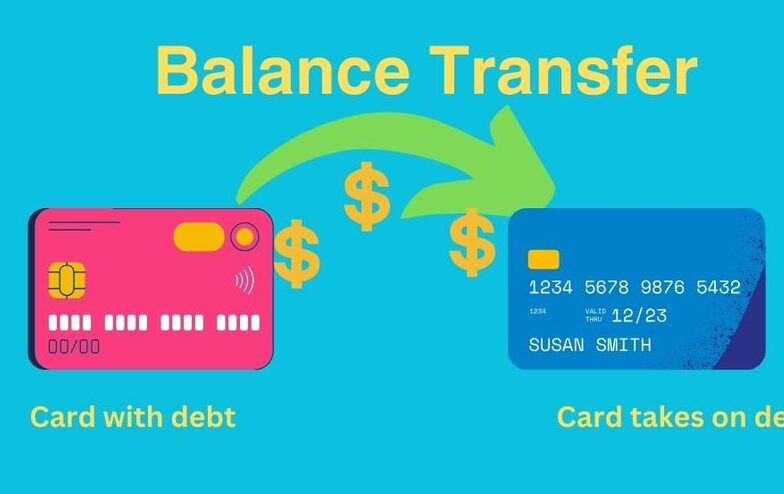Use 0% APR balance transfers to lower interest costs and accelerate mortgage debts. Cut credit card rates to free up cash flow for extra principal payments.

Managing mortgage loans can be challenging, especially when other debts like credit card balances pile up. Balance transfers allow you to move existing credit card balances to a new card, often with a 0% introductory APR for a set period.[1] Using balance transfers strategically can free up cash flow to pay down your mortgage faster. Here’s how it works.
What Is a Balance Transfer?
A balance transfer involves moving a credit card balance from one card to another. Many credit card companies offer promotional 0% interest rates on balance transfers for an introductory period, usually between 12-18 months.[2] So if you transfer debt to a card with a 0% rate, you don’t have to pay interest on that balance for a while.

Taking advantage of a low-interest or no-fee balance transfer offer allows you to reduce interest expenses and pay down debt faster. You can then use the extra cash to accelerate mortgage payments during the intro 0% interest period.
Balance Transfer Credit Card Basics
When looking for the best balance transfer card for your situation, here are some key things to consider:
- 0% Introductory APR Length – The longer the 0% term, the more time you have to pay down balances interest-free. 12-18 months is common.[3]
- Balance Transfer Fee – This one-time fee is usually 3-5% of the amount transferred.[4] Calculate costs to ensure savings outweigh fees.
- Credit Score Requirements – Cards with the best terms usually require very good to excellent credit, a 720 score or higher.[5]
- Intro Purchase APR – Some cards offer 0% rates on new purchases too for added flexibility.
Compare all costs, fees, and terms when choosing the best balance transfer card for paying off mortgage debt faster.
Master Guide to Balance Transfer Fees – Maximize 0% APR Savings
Transferring High-Interest Debt to Pay Mortgage
The first step is to transfer any existing high-interest credit card balances to a card with a 0% introductory balance transfer offer to eliminate that interest burden. Choose a card with the longest 0% term possible that does not charge an annual fee.[6]
Be cautious of cards with high balance transfer fees. An ideal fee is between 3-4%. If you transfer $10,000 at a 3% fee, you would pay $300. Compare that to the interest charges saved over 12+ months to determine if the transfer makes sense for your situation.[7]
During the 0% intro period, continue charging necessary expenses like gas and groceries to that card instead of your mortgage bank account. Then use the freed-up cash to pay extra towards mortgage principal each month, which saves on interest costs over the loan term.
Why You Need Balance Transfer Cards Them To Pay Off Debt Fast In 2024
Strategic Ways to Pay Mortgage with Balance Transfers
Here are some strategic ways to leverage 0% balance transfer offers to accelerate mortgage payoff:
Pay Fixed Extra Amount Each Month
Determine how much freed-up cash is available by moving credit card balances to the 0% card. Then pay that fixed amount extra each month toward the mortgage principal during the no-interest period.[8] This builds payoff momentum without hitting cash flow.
Pay Half the Minimum Due
Most lenders let borrowers pay an extra 10-20% each month. But even paying half that minimum due addition goes far.[9] Doing so on a $200,000 balance saves roughly $14,000 in interest over 30 years.
Refinance and Pay Loan Terms Down
Shortening loan terms cuts interest costs faster too. Refinancing a 30-year to 20-year loan while keeping the monthly payment the same accelerates payoff by several years.[10] Then paying extra monthly principal saves much more over the life of the loan.
Using Transfers to Tackle Mortgage Debt
Because balance transfers pause interest charges, they create an opportunity to direct more cash flow towards paying down mortgage principal [4]. Here are some proven strategies:
- Save on interest first: If mortgage debt is costing you thousands in interest each year, a balance transfer can provide immediate relief on that front. Halt credit card interest so you can target mortgage principal.
- Funnel freed up funds for extra mortgage payments: With credit card interest paused, redirect that cash flow to make an extra mortgage payment each month. This will directly reduce principal. Some lenders let you make bi-weekly mortgage payments as well to take an even bigger bite out of the balance.
- Consolidate higher rate debts first: Before tapping low/no-fee balance transfers for mortgage paydown, use them to consolidate higher rate debts from department stores, personal loans, etc. Once those balances are migrated to a lower rate, roll those monthly savings into tackling your mortgage balance.
- Apply for a lower rate on the remaining mortgage balance: As balance transfers help you systematically pay down mortgage debt, also contact your lender to apply for a lower rate once you build more equity and improve your credit. This further accelerates the payoff.
How to transfer mortgage debt to balance transfer cards?
Transferring Mortgage Debt to 0% Balance Transfer Cards
Struggling with high-interest mortgage debt? Consider shifting a portion of that balance to a 0% APR balance transfer card as a temporary relief strategy. This pause on interest charges frees up monthly cash flow to pay extra mortgage principal.
First, find cards offering 12-21 months no interest on transfers, ideally with no balance transfer fees. Submit applications for chosen cards, getting approved for enough credit to consolidate mortgage interest costs for 6-12 months.
Upon approval, request checks to pay down the mortgage principal directly. Or, fund checking accounts with credit lines, withdrawing cash to make manual mortgage payments. Automate payments on the balances for the 0% term to ensure no interest accrues.
As monthly mortgage interest costs decrease, reallocate those funds to extra principal payments. This rapid reduction in overall mortgage debt accelerates the payoff timeline.
Follow this strategic process to shift debt to lower rates, saving money long-term. But have an exit strategy before intro periods expire to avoid renewed interest charges.
Balance Transfer Risks to Consider
While balance transfers used responsibly allow consumers to save thousands in interest expenses, some risks exist. Be aware of these downsides when transferring card balances:
- After the 0% period ends, unpaid balances start accruing high interest quickly – often 20% APR or more.[11] Set calendar alerts to ensure you pay off the full amount before rates rise.
- Missed payments quickly forfeit the 0% interest rates offered on balance transfers.[12] Set up autopay through your card issuer to avoid issues.
- Balance transfers don’t fix ongoing spending problems.[13] Create a realistic budget that covers all monthly bills to avoid future high-interest credit card balance situations after paying off debts.
With some careful planning and responsible usage, leveraging short-term balance transfer offers allows consumers to pay off mortgages faster and slash interest costs substantially over time. Discuss options with a financial advisor to map out the best debt reduction strategy for your unique financial situation.
Here are some tips for responsible usage:
- Create a detailed debt payoff plan and timeline before moving balances. Calculate exactly when transfers will be paid off.
- Leave credit available on transfer cards for unplanned expenses. Don’t max out 100% of limits.
- Pay more than minimums each month to pay off balances faster. Don’t carry debt month-to-month needlessly.
- Set up autopay and account alerts to avoid missed payments and credit damage. Stay disciplined.
- Talk to a nonprofit credit counseling agency if debt feels unmanageable. Get professional support.
Signs It’s Time to Consider Balance Transfers
Here are some clear indicators that balance transfers could aid your mortgage debt management efforts:
- Monthly minimum credit card payments are so high they prevent extra mortgage payments
- Recent financial challenges led to reliance on high-rate credit card debt to cover costs
- Mortgage refinancing isn’t viable, but need temporary rate relief to manage payments
- Conflicting due dates make deciding which bills to pay confusing or overwhelming
If your credit card interest rates exceed your mortgage rate by a decent margin, transfers make sense. They interrupt the most expensive debt first. If you need breathing room from credit card bills to tackle mortgage debt head on, zero-fee transfers allow exactly that flexibility.
Can you use a balance transfer to pay off a mortgage?
No, balance transfers are a feature of credit cards that allows you to transfer debt from one card to another. Mortgages are an entirely different type of loan, secured by real estate collateral, that would not be eligible for a credit card balance transfer [1].
Can you pay off a car loan with a balance transfer?
While you cannot directly transfer a balance to pay off an auto loan, you may be able to use an introductory 0% APR credit card to pay off a car loan in installments during the intro period. However, this takes careful planning and discipline to pay off the entire transferred credit card balance before the promo rate expires and high interest kicks in.
Is balance transfer a good idea for a home loan?
No, a balance transfer is a credit card feature that lets you move debt from one card to another to save on interest. It does not apply to mortgage or secured loans like a home equity line of credit (HELOC). Balance transfers only work for eligible unsecured credit card balances.
Can I pay my mortgage with a credit card to earn points?
Technically you can try this approach, but it carries risks. Most mortgages levy high fees for credit card payments (around 3-5%), negating any points earned. And if you cannot pay off the credit card charge before the high-interest kicks in, you end up deeper in debt. It’s best to avoid this method.

